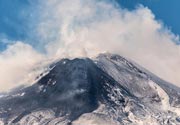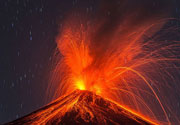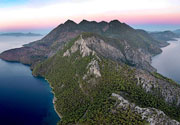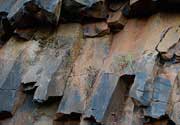Guallatiri Volcano
Updated: Apr 27, 2024 19:23 GMT -
stratovolcano 6071 m / 19,918 feet
Northern Chile, Bolivia and Argentina (South America), -18.42°S / -69.09°W
Current status: normal or dormant (1 out of 5)
Northern Chile, Bolivia and Argentina (South America), -18.42°S / -69.09°W
Current status: normal or dormant (1 out of 5)
Last update: 20 Dec 2021 (Smithsonian / USGS Weekly Volcanic Activity Report)
Volcán Guallatiri in northern Chile just west of the Bolivian border is one of northern Chile's most active volcanoes.
It is a symmetrical ice-covered stratovolcano at the SW end of the Nevados de Quimsachata volcano group. Its summit contains a dacitic lava dome complex with the active vent located at its southern side.
There are thick lava flows on the lower northern and western flanks of the andesitic-to-rhyolitic volcano.
In historic times, Guallatiri's activity consisted in small explosive ash eruptions. There is intense fumarolic activity with "jet-like" noises, and numerous solfataras are located more than 300 m down the west flank.
Source: Smithsonian / GVP Guallatiri volcano information
[smaller] [larger]
Guallatiri volcano eruptions: 1985(?), 1960, 1959, 1913, 1908(?), 1825 ± 25
Latest nearby earthquakes
| Time | Mag. / Depth | Distance / Location | |||
Eruptions of Guallatiri volcano
1996 fumarolic activity
Observations of Guallatiri Volcano on 19-20 July 1996 showed quiet emissions of white vapor from the summit crater. On the southern flank 400 m below the summit, there was a snow-free area which emitted vapour.
(GVP monthly reports)
Observations of Guallatiri Volcano on 19-20 July 1996 showed quiet emissions of white vapor from the summit crater. On the southern flank 400 m below the summit, there was a snow-free area which emitted vapour.
(GVP monthly reports)
1991 strong fumarolic activity
On 2 November 1990, 2 areas of strong fumarolic activity were observed at Guallatiri volcano. The most vigorous fumaroles were 80 m below the summit and produced a 200 m high plume, accompanied by jet-engine-like noises.
On 2 November 1990, 2 areas of strong fumarolic activity were observed at Guallatiri volcano. The most vigorous fumaroles were 80 m below the summit and produced a 200 m high plume, accompanied by jet-engine-like noises.
1985 probable eruption
Emissions of pulsating steam plumes producing billowing clouds rising 500 m vertically then drifting west were observed on 1 December 1985, but from 25 km distance. The eruptions occurred in intervals from 45-75 minutes. Originally, it was thought that Acotango volcano had erupted, but later studies and field observations revealed that most likely, Guallatiri volcano had a small eruption. The nearby volcanoes Capurata, Acotango, and Humarata did not show any signs of activity and their craters were covered with clean ice and snow.
Instead, vigorous fumarolic activity was found at Guallatiri volcano, indicating that this was the site of the 1985 eruption.
(Source: Smithsonian / GVP monthly reports)
Emissions of pulsating steam plumes producing billowing clouds rising 500 m vertically then drifting west were observed on 1 December 1985, but from 25 km distance. The eruptions occurred in intervals from 45-75 minutes. Originally, it was thought that Acotango volcano had erupted, but later studies and field observations revealed that most likely, Guallatiri volcano had a small eruption. The nearby volcanoes Capurata, Acotango, and Humarata did not show any signs of activity and their craters were covered with clean ice and snow.
Instead, vigorous fumarolic activity was found at Guallatiri volcano, indicating that this was the site of the 1985 eruption.
(Source: Smithsonian / GVP monthly reports)





